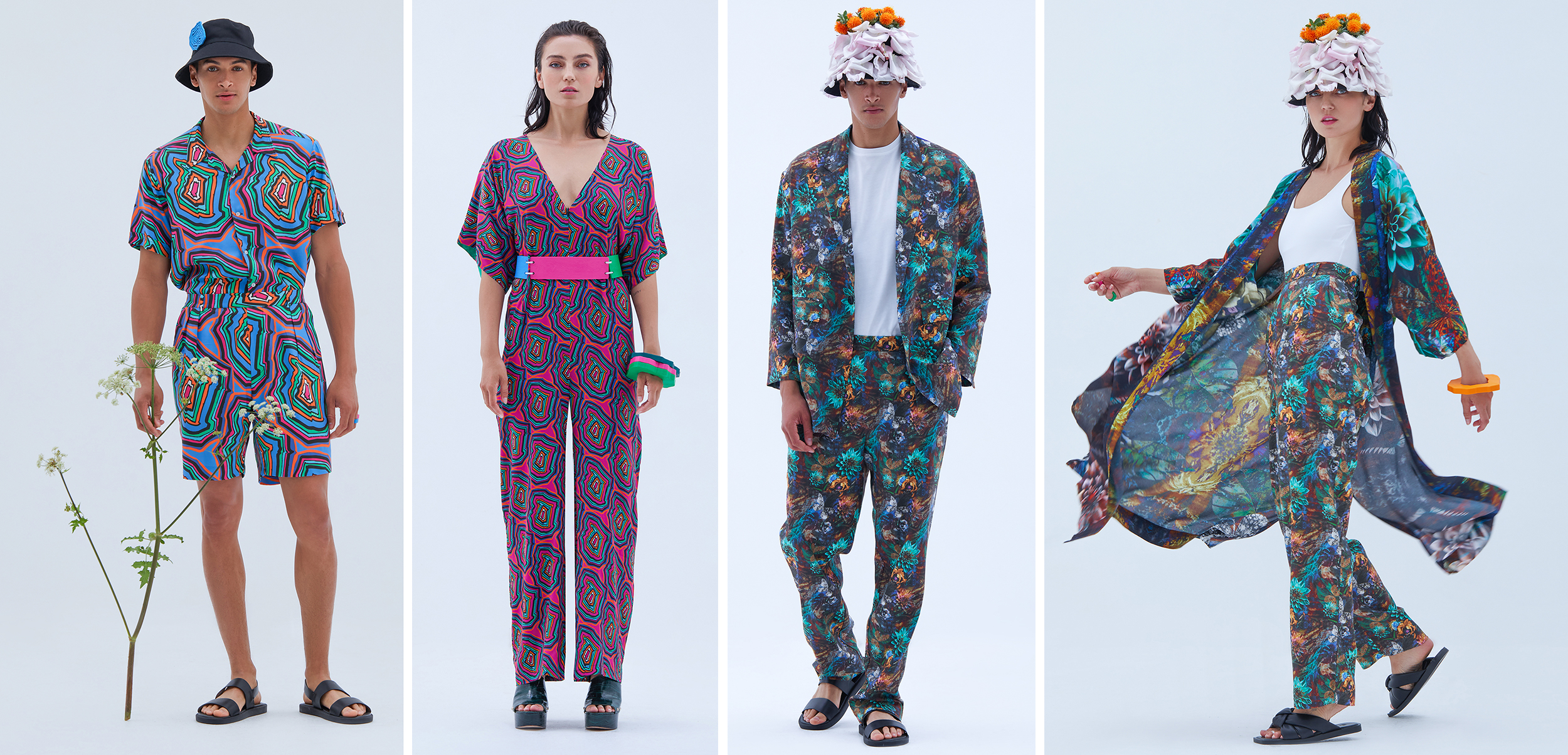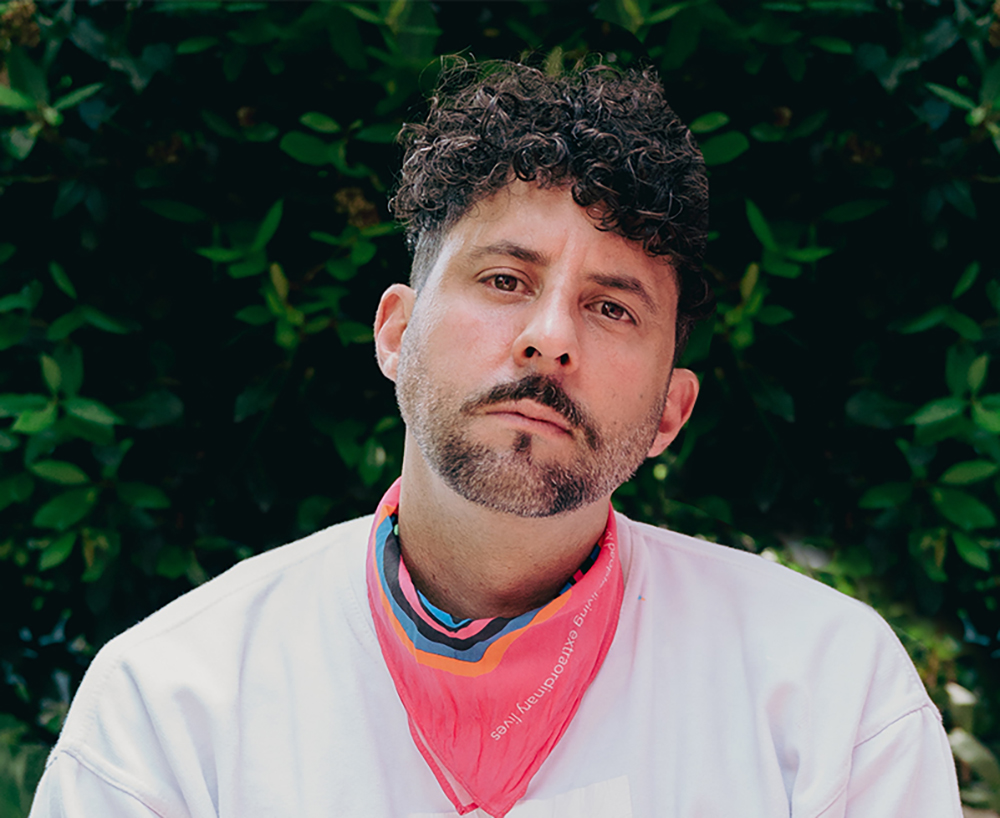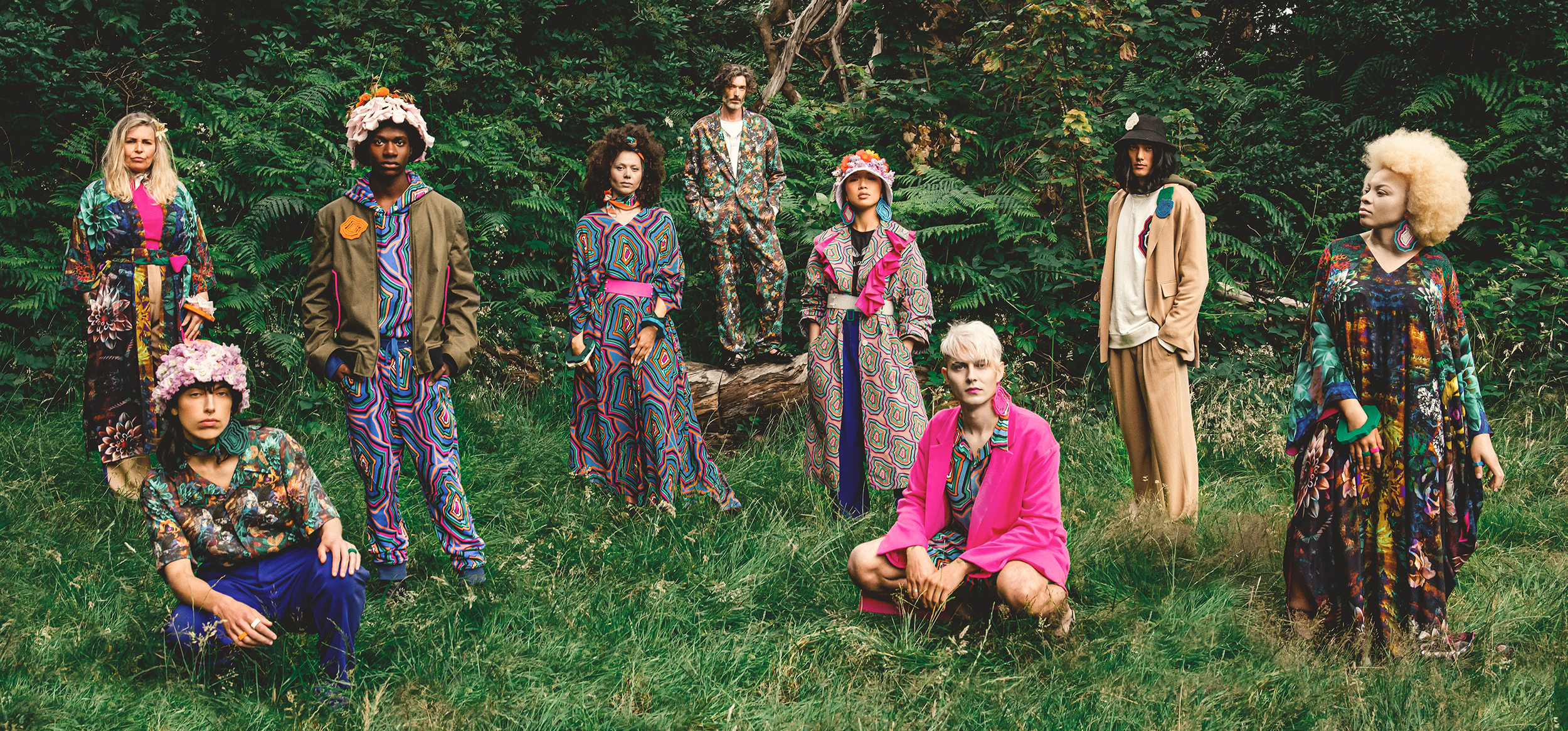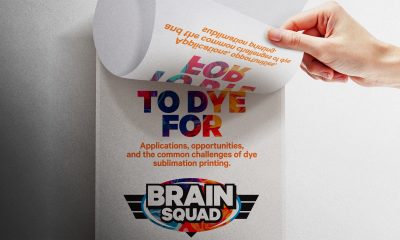A TOPIC OF IMMENSE interest, and hope, in the fashion industry is dye sublimation printing. Advances in this technology continue to inch the industry closer to sustainable options with custom, made-to-order printing capabilities at the heart of the effort. This is exciting for people like designer and social entrepreneur Patrick Grant, who has been a regular fixture in GQ’s “50 Best Dressed Men” and hosts fashion-focused programming on BBC. He likes to call the bluff on many big fashion industry players’ claims to be “sustainable,” but believes in the potential of made-to-order dye sub printing.
“The fashion industry makes up for 10 percent of global greenhouse gas emissions and 22 percent of global pesticide use,” says Grant. “That’s basically one in five insects in the world being killed by the fashion industry. It almost makes up for 20 percent of global water pollution, and up to 34 percent of ocean microplastics can be traced back to fashion.”
The point is, there’s tangible room for improvement in fashion production, and dye sublimation printing offers a solution. Right now, large companies like Disney and Nike have shifted significant portions of their merchandise production to an ecofriendly strategy that only produces pieces after they’ve been purchased.

Love Hero’s bright, captivating design style is perfect for displaying the impressive capabilities of dye sublimation production.
On a similar front, programs like KornitX allow made-to-order fashion possible for anyone, even smaller scale designers. The program gives designers the capability to sell their garments online on a made-to-order basis using custom, dye sub printing offered at partnering print shops across the globe. The program can be built into any Shopify-esque website, and it has a global reach. A user can purchase a dress online that doesn’t actually exist in the real world yet. Once purchased, the dress is then manufactured via dye sublimation printing at the nearest partnered shop to the customer. It’s then cut, stitched, perfected, and shipped to the buyer. Because it was made at the closest partnering manufacturer, it saves on shipping and reduces carbon emissions. The process works for T-shirts, hoodies, and other promotional items.It also prevents the age-old problem of over production in the fashion industry.
“Thirty percent of all the clothing made by the fashion industry is never sold. Last year, there were over 100 billion garments manufactured globally. In the last 20 years, we’ve made at least 1.7 trillion garments,” says Grant. “Someone once told me that four years ago there was enough clothing on the planet back then to clothe the next six generations of the human race. Something radical has to happen here. We have to start with something that’s completely different from the way fashion is being produced now.”

Joshua Scacheri
Joshua Scacheri, co-founder of Love Hero, a new ecofriendly fashion brand, had been working in the industry for years and didn’t like the damage he was witnessing the earth suffer. As a founding member of Love Hero, he and his company are committed to traceability and efficiency using dye sub printing technology as a backbone of their process. They have developed a way to let their customers know exactly where their clothes are coming from, down to the threads.

“Thirty percent of all the clothing made by the fashion industry is never sold. Last year, there were over 100 billion garments manufactured globally.”
“To achieve this level of traceability, we use blockchain processes to give our customers the clearest view of where the elements of our garments originate, where they are made, and by whom,” says Scacheri. “This type of transparency not only verifies our supply chain down to the source of raw materials, but it also collects all documents and certificates that record the chain of custody.” Love Hero prints a QR code directly onto the inside tag of the garment, and the customer can scan it and view information on the product’s production via a URL.
Bill McRaith, ex-chief supply chain officer of PVH, an American clothing company, has an impressive strategy in place to take this type of sustainable idea to the next level. He presents the model of an “Eco Park,” which is essentially a large campus for textile producers that would allow a company to have all major elements of their operation, from the C-Suite to the sewers, in one place with the goal of drastically reducing waste and pollution. It also creates great opportunities to repurpose unsold products by recycling in-house.
“Only 15 percent of unpurchased product actually gets acquired back by the company who manufactured it,” says McRaith. “The vast majority of that product is still going to the landfill today.”
With his Eco Park idea, that unsold product would no longer go to the landfills, but to the companies to clean, repurpose, and reclaim it. The repurposed textiles can then go back into the marketplace with dye sublimation printed designs and a completely new look. The custom textile printing options offered by dye sub are hard to compete with, and the ability to integrate with the internet and produce to order can make a big impact on reducing pollution.
PHOTO GALLERY (8 IMAGES)
Advertisement


 VEHICLE WRAPS + GRAPHICS3 weeks ago
VEHICLE WRAPS + GRAPHICS3 weeks ago
 Press Releases3 weeks ago
Press Releases3 weeks ago
 Case Studies3 weeks ago
Case Studies3 weeks ago
 Case Studies1 week ago
Case Studies1 week ago
 Benchmarks3 weeks ago
Benchmarks3 weeks ago
 Press Releases2 months ago
Press Releases2 months ago
 Press Releases3 weeks ago
Press Releases3 weeks ago
 Press Releases2 months ago
Press Releases2 months ago
























